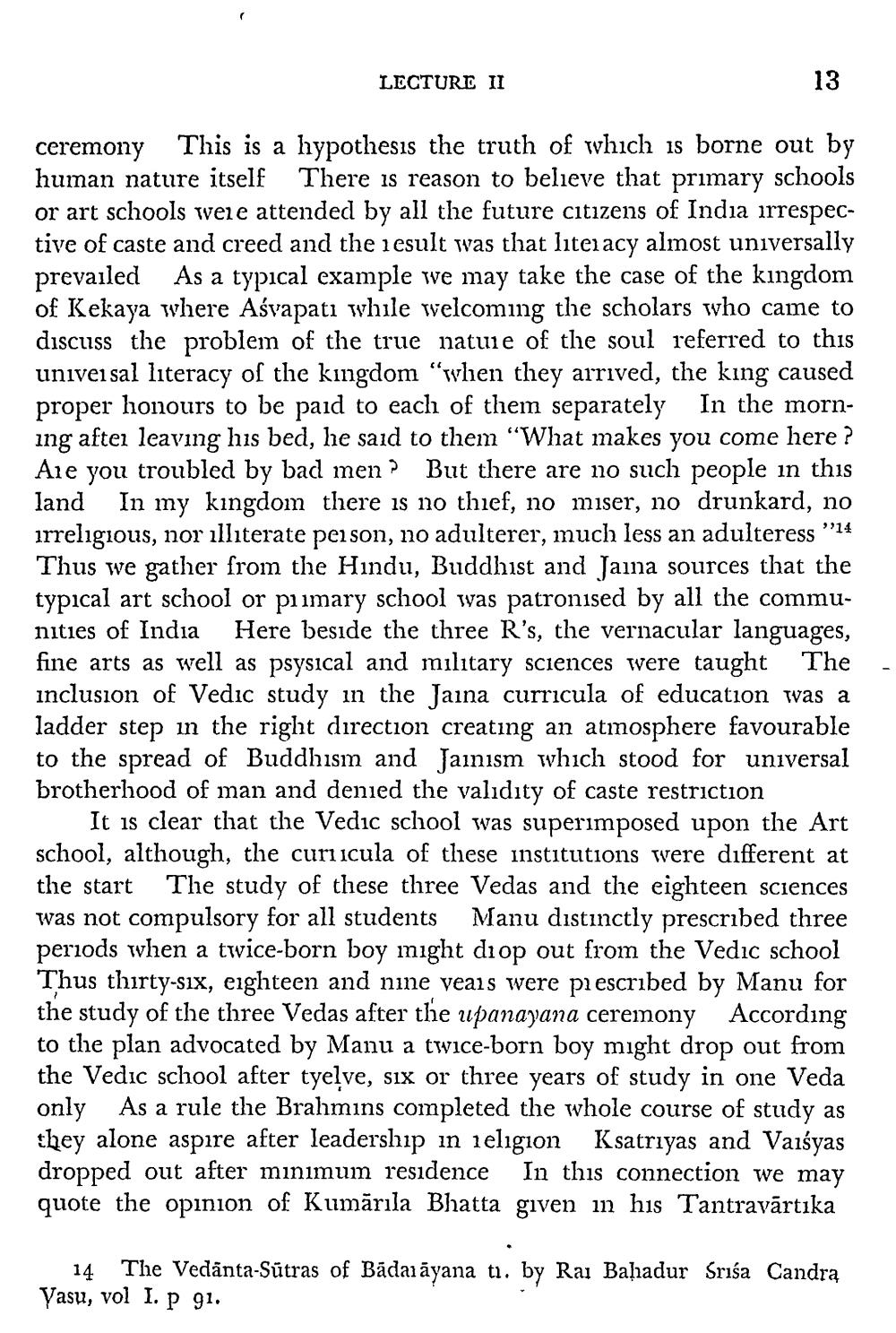________________
LECTURE II
13
ceremony This is a hypothesis the truth of which is borne out by human nature itself There is reason to believe that primary schools or art schools were attended by all the future citizens of India irrespective of caste and creed and the iesult was that literacy almost universally prevailed As a typical example we may take the case of the kingdom of Kekaya where Aśvapati while welcoming the scholars who came to discuss the problem of the true nature of the soul referred to this universal literacy of the kingdom "Whien they arrived, the king caused proper honours to be paid to each of them separately In the morning after leaving his bed, he said to them "What makes you come here? Are you troubled by bad men > But there are no such people in this land In my kingdom there is no thief, no miser, no drunkard, no irreligious, nor illiterate person, no adulterer, much less an adulteress ''14 Thus we gather from the Hindu, Buddhist and Jaina sources that the typical art school or piimary school was patronised by all the communities of India Here beside the three R's, the vernacular languages, fine arts as well as psysical and military sciences were taught The inclusion of Vedic study in the Jaina curricula of education was a ladder step in the right direction creating an atmosphere favourable to the spread of Buddhism and Jainism which stood for universal brotherhood of man and denied the validity of caste restriction
It is clear that the Vedic school was superimposed upon the Art school, although, the curiicula of these institutions were different at the start The study of these three Vedas and the eighteen sciences was not compulsory for all students Manu distinctly prescribed three periods when a twice-born boy might diop out from the Vedic school Thus thirty-six, eighteen and nine years were piescribed by Manu for the study of the three Vedas after the upanayana ceremony According to the plan advocated by Manu a twice-born boy might drop out from the Vedic school after tyeļve, six or three years of study in one Veda only As a rule the Brahmins completed the whole course of study as they alone aspire after leadership in ieligion Ksatriyas and Vaisyas dropped out after minimum residence In this connection we may quote the opinion of Kumārıla Bhatta given in his Tantravārtika
14 The Vedānta-Sūtras of Bādarāyana ti. by Rai Baļiadur Srisa Candrą Yasu, vol I. P 91.




